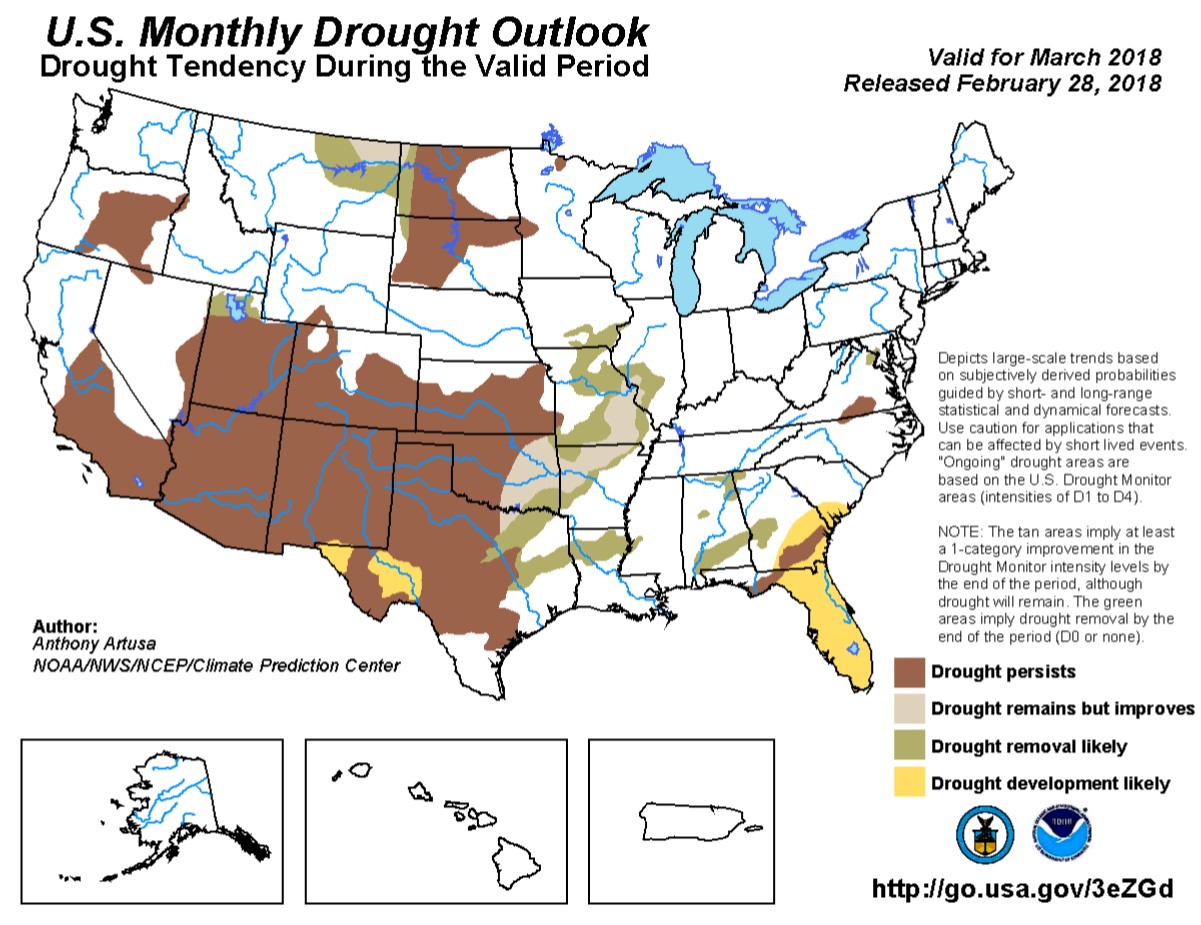Clyde W. Fraisse, Ph.D., Associate Professor & Extension Specialist, Agricultural & Biological Engineering, University of Florida – IFAS – http://agroclimate.org/

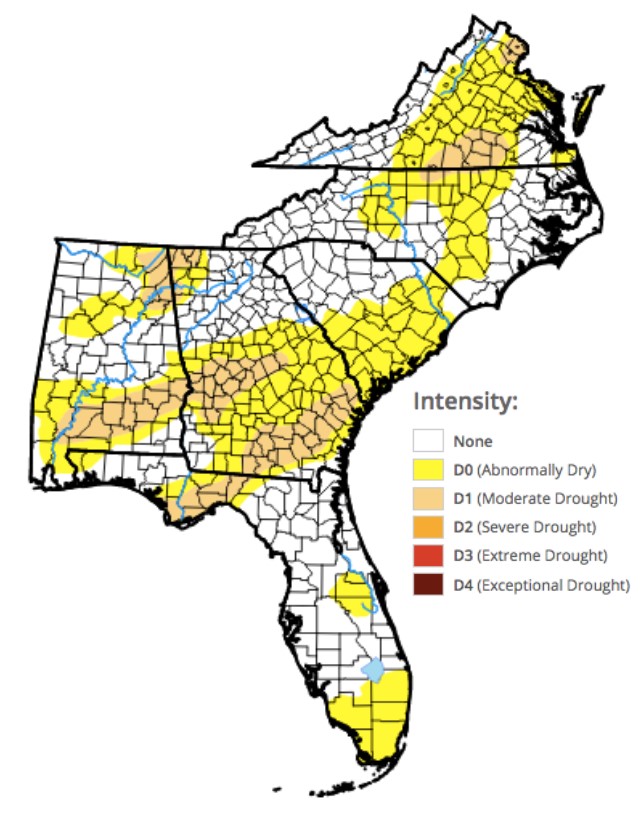 March 1, 2018, La Niña conditions are present in the tropical Pacific Ocean and expected to persist during the remaining of the winter, transitioning to ENSO-Neutral in the spring. According to the U.S. Drought Monitor the Southern Peninsula and sections of the Panhandle are experiencing abnormal dryness (D0) or moderate drought (D1). However dry conditions are favored for the Florida Peninsula during March, with elevated risk of wildfire activity. Record–warm temperatures were recorded across the state during February.
March 1, 2018, La Niña conditions are present in the tropical Pacific Ocean and expected to persist during the remaining of the winter, transitioning to ENSO-Neutral in the spring. According to the U.S. Drought Monitor the Southern Peninsula and sections of the Panhandle are experiencing abnormal dryness (D0) or moderate drought (D1). However dry conditions are favored for the Florida Peninsula during March, with elevated risk of wildfire activity. Record–warm temperatures were recorded across the state during February.
While drier conditions generally decrease fungal and bacterial diseases and help growers reduce the number of fungicide applications, viruses caused by thrips (Tomato Spotted Wilt [TSW]) and white fly (Tomato Yellow Leaf Curl [TYLCV]) are problems as warm, dry winter may increase flower thrips abundance. Yellow mustard and wild pansy are ideal hosts for thrips, and a warm winter may provide ideal growing conditions for these and many other host plants. If conditions are dry during the spring, it may be best to kill cover crops earlier in order to preserve more moisture in the soil. High nighttime temperatures (above 65°F) can also be a problem for fruit setting.
February Weather Report
Average rainfall accumulated during February in Florida ranged from about 0.6 inches in the Southern District to 7.1 inches In the Northwest District. Below average rainfall was observed in all districts but the Northwest. Average maximum temperatures across the state during February were record-warm ranging from about 73°F in the Northwest to 79°F in the Southern Peninsula.
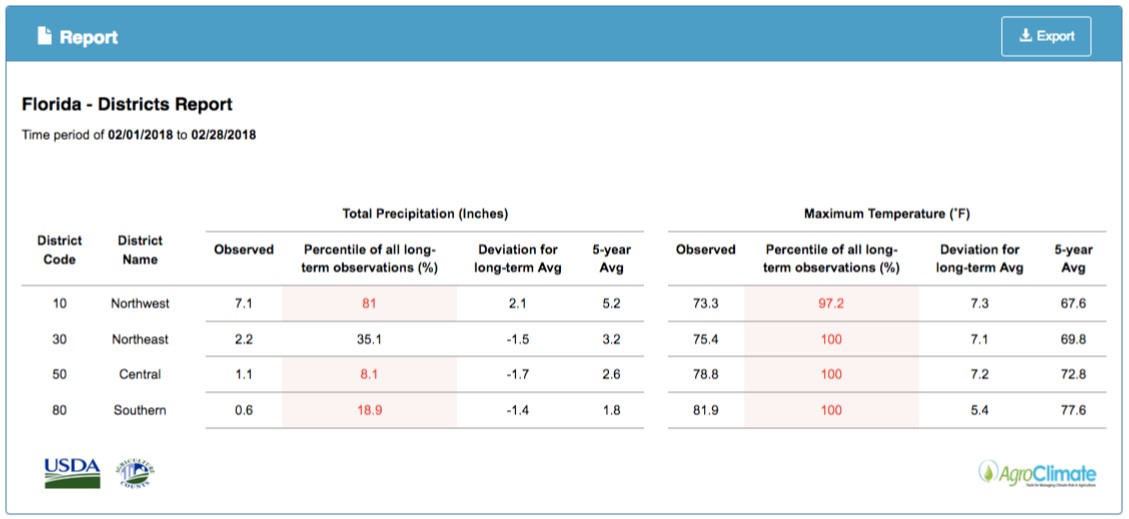
Average total rainfall and maximum temperature for Florida districts during the month of February and ranking based on long-term averages (Data source: PRISM Climate Group).

Total rainfall (in) long-term averages (left) and observed deviation (right) during the month of February (Data source: PRISM Climate Group): http://agroclimate.org/tools/rainfall-and-temp-monitoring/
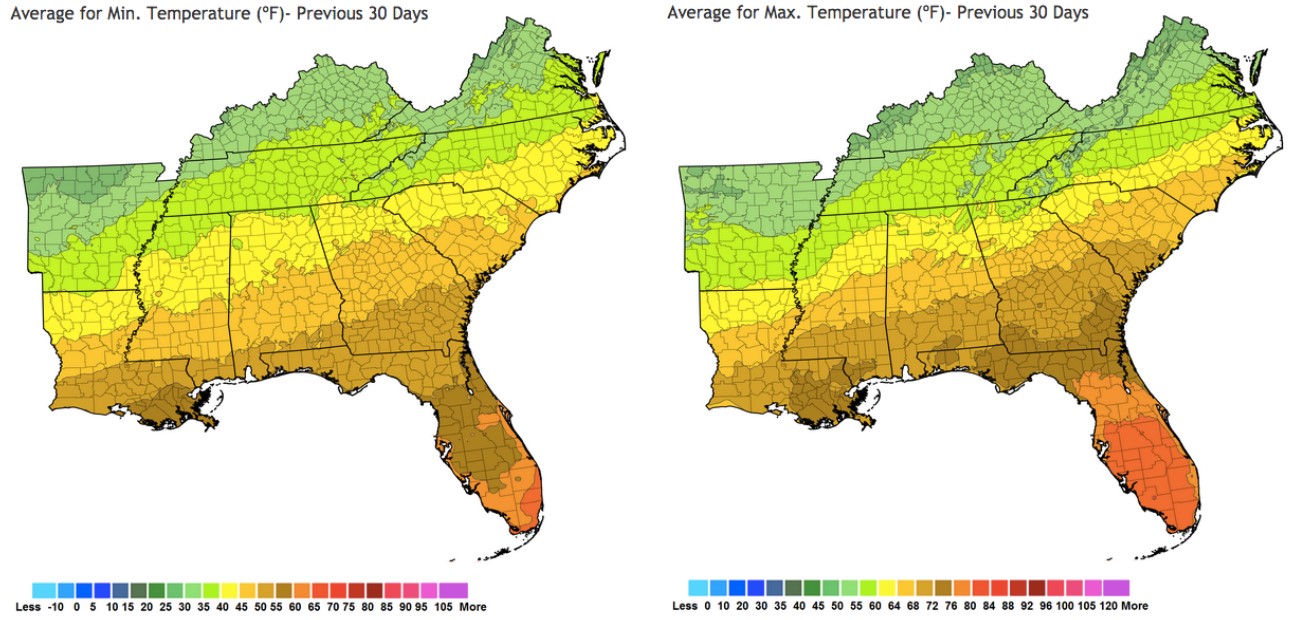
Average minimum (left) and maximum temperatures (right) during the month of February (Data source: PRISM Climate Group): http://agroclimate.org/tools/rainfall-and-temp-monitoring/
Seasonal Outlook
NOAA-CPC 3-month outlooks (Mar-April-May) indicate increased probability for above average
temperature (left) and below average precipitation (right) for Florida during the next 3 months (check the AgroClimate website to learn more about how to read the seasonal forecast maps:
http://agroclimate.org/forecasts/seasonal-forecast/)
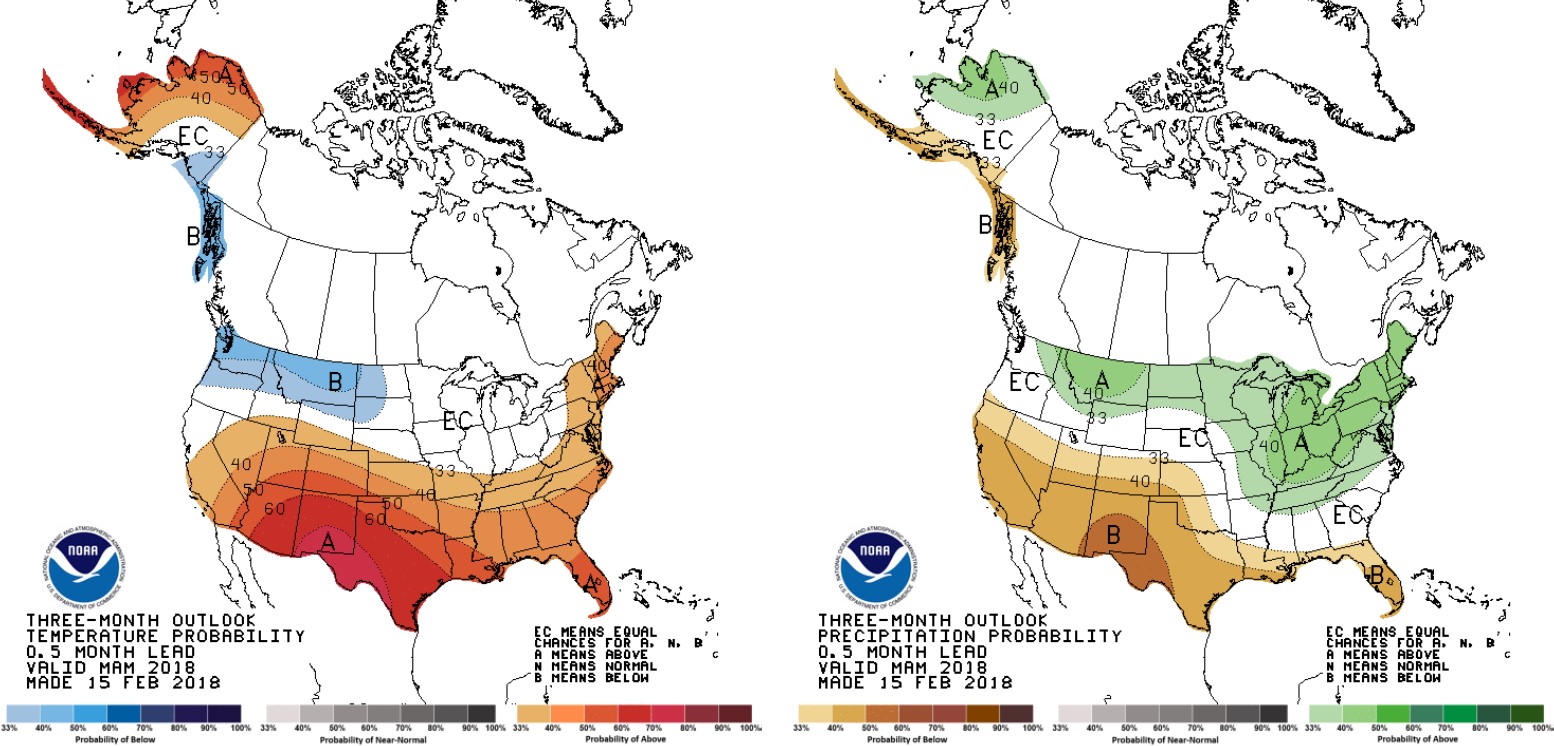 Drought Outlook
Drought Outlook
The latest drought outlook indicates that prospects for drought development are elevated for the
Florida peninsula, southeastern Georgia, and along much of the South Carolina coast. It is during March and April that the Florida peninsula typically experiences the height of the dry season, along with significantly elevated wildfire activity.
EL Niño Southern Oscillation (ENSO) Update
In mid-February 2018, the tropical Pacific reflected La Niña conditions, with Sea Surface Temperatures (SSTs) in the east-central tropical Pacific Ocean in the range of weak to moderate La Niña and most key atmospheric variables showing patterns suggestive of La Niña conditions. The official CPC/IRI outlook calls for La Niña continuing through at least early spring, followed by a likely return to neutral conditions around mid-spring.
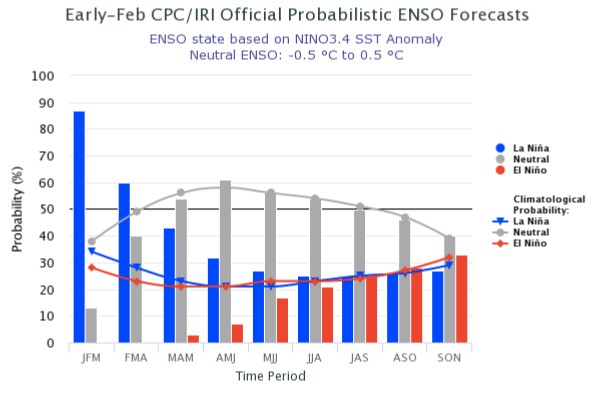
CPC/IRI ENSO probabilistic forecast indicating a return to Neutral ENSO conditions in early spring: https://iri.columbia.edu/our-expertise/climate/forecasts/enso/current/?enso_tab=enso-cpc_update
Our Sponsors:
- Northwest Florida Beef Cattle Conference & Trade Show – February 11 - December 19, 2025
- Friday Feature:The Sears Catalog –How Rural America Shopped before the Internet - December 19, 2025
- November 2025 Weather Summary & Winter Outlook - December 5, 2025

